These days, reading art press is a perilous exercise for the fact seeker. Given that most (if not all) popular publishing platforms rely on advertising or non-reader driven funding, fact is often coloured by obligations to those who hold the money. Moreover, in an industry where perception has a far higher impact on price and market making, good PR is everything. With so much money at stake, the easiest path to securing a chorus of approval is via the channels and players who acknowledge the importance of these structures, not only in general but also in the context of their own practice.
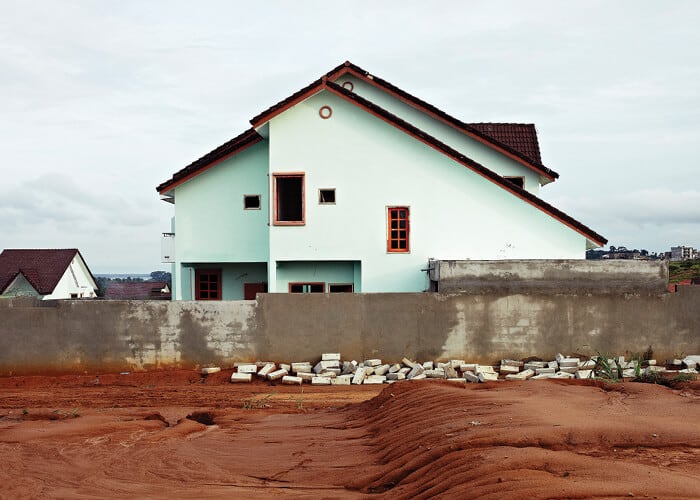 François-Xavier Gbré, detail of Cite Esperance #2, Route de Bingerville, 2013. 102 x 136cm. © François-Xavier Gbré. Courtesy of Galerie Cécile Fakhoury
François-Xavier Gbré, detail of Cite Esperance #2, Route de Bingerville, 2013. 102 x 136cm. © François-Xavier Gbré. Courtesy of Galerie Cécile Fakhoury
The African contemporary art sector has been riding on a tsunami of headlines heralding arrival: “the first this” and “bringing African art here” with a veni, vidi, vici celebration at every turn. And while social media and short attention spans support the shiny glibness of the headlines, they belie the complexity, nuances and hard work of the real undertaking – and often the understanding of what that real undertaking itself is all about.
“African Artists Take Over NYC: Okayafrica’s Guide To Armory Weekend” proclaimed OkayAfrica. The Observer, in an article titled ‘The Armory Show Unveils the Dawn of a New Era for African Art,’ stated that “the fair’s Focus Section puts African artists front and centre.” Ryan Steadman wrote about “Why the ‘African Perspectives’ Section Is the Number One Reason to Visit The Armory Show,” and the Huffington Post gushed “Contemporary Art of Africa Shines at Armory Week 2016.”
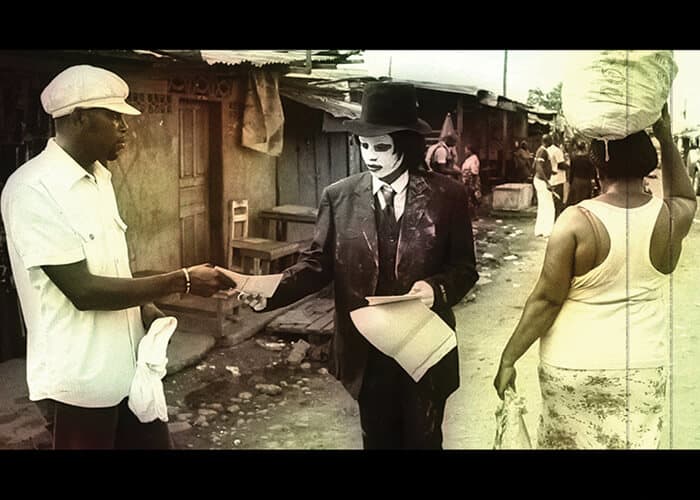 Ato Malinda, detail of still from On Fait Ensemble, 3/5, 2010. Video. Image courtesy of Circle Art Gallery.
Ato Malinda, detail of still from On Fait Ensemble, 3/5, 2010. Video. Image courtesy of Circle Art Gallery.
While the headlines screamed success, not just for African Perspectives but for contemporary art from Africa at The Armory Show in general, trying to surmise the on-the-ground experience proved to be a delicate exercise and far more complex.
Speaking to people outside of the predictable circle of reference yielded equivocal responses. A large number of people, including art critics, artists and curators, didn’t want to comment on the record and those who did preferred to respond to issues rather than details of the exercise.
Two bookending responses came from Dexter Wimberly – a progressive young curator, who has recently been working more with African contemporary artists – and Skoto Aghahowa, famed owner of Gallery Skoto, the stalwart and pioneer of African art in New York.
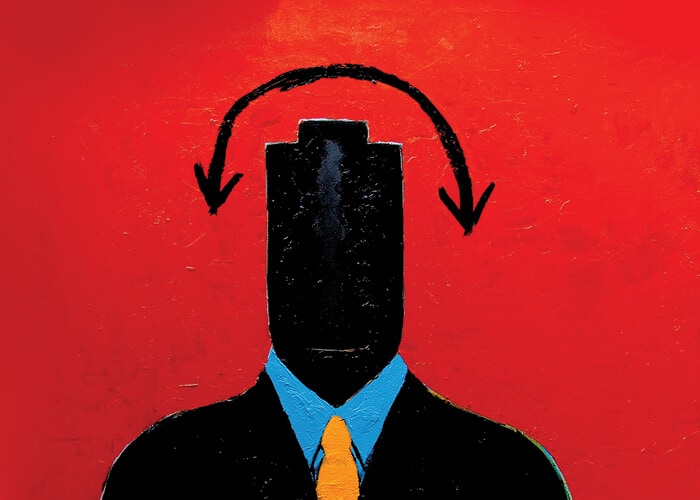 Emanuel Tegene, Hypocrite I, 2015. Acrylic on Canvas, 150cm x 120 cm. Image courtesy of Addis Fine Art.
Emanuel Tegene, Hypocrite I, 2015. Acrylic on Canvas, 150cm x 120 cm. Image courtesy of Addis Fine Art.
According to Wimberly, “There’s always the danger of essentialising when art is grouped by geography, gender or ethnicity. However, we must be honest about the purpose of commercial galleries and by extension, the purpose of art fairs. These are places where people go to purchase things. As a result there is the market-driven need for categorisation and organisation whether it is by theme, material characteristics or content. What’s necessary, in my opinion, is that the participating galleries and artists leverage the visibility and sales from the fair for their own plans and broader ambitions beyond this single occurrence.
Galleries and artists participate in art fairs by choice – as business decisions – and I think it is up to the individual gallerists and artists to reach an accord and decide what the best environment for their work to be presented in is… In my view, if the participating galleries were pleased with sales and the artists that they represent felt similarly pleased then it was, at least by commercial standards, a success. Art fairs have been attempting to create platforms for this kind of critical discourse through artist talks and other programming. However, I believe that it is unlikely that any commercial art fair will present programming that dismantles its very reason for being. It’s up to artists and curators to create their own platforms for such conversations.”
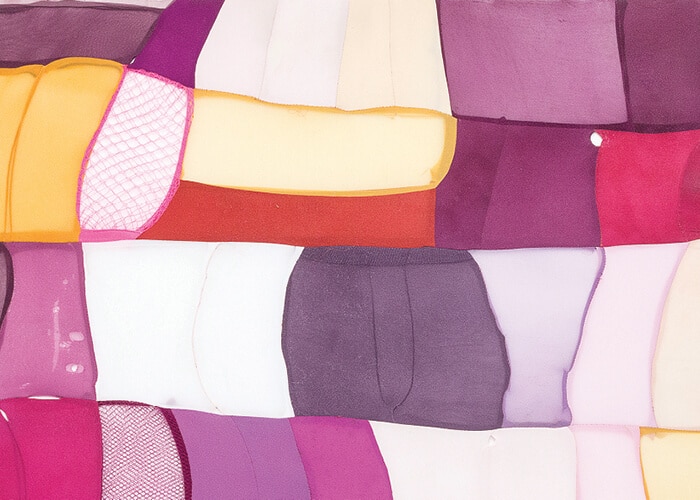 Turiya Magadlela, detail of iMaid ka Lova 13, (2016) Nylon and cotton pantyhose, fishnet stockings, and thread and sealant on canvas, 120 x 120cm. Image courtesy of the artist and Blank Projects.
Turiya Magadlela, detail of iMaid ka Lova 13, (2016) Nylon and cotton pantyhose, fishnet stockings, and thread and sealant on canvas, 120 x 120cm. Image courtesy of the artist and Blank Projects.
Aghahowa concurred in some ways, underscoring that Armory is just one event in a city oversaturated with art:
“We do feel that the art fair format, as it is presently configured, does not offer a platform for serious engagement – with some of the most dynamic art being produced in the peripheries of the Western art world at present. All the works in an art fair are presented in a highly commercialised environment with a level playing field and accessible to all audiences. However, this assumption is false since most collectors tend to acquire works that they are familiar with and very few are prepared to do the research and hard work required in order to seriously engage with works that are new to them. Some of the audiences at these fairs are there to be entertained and have very short attention spans.
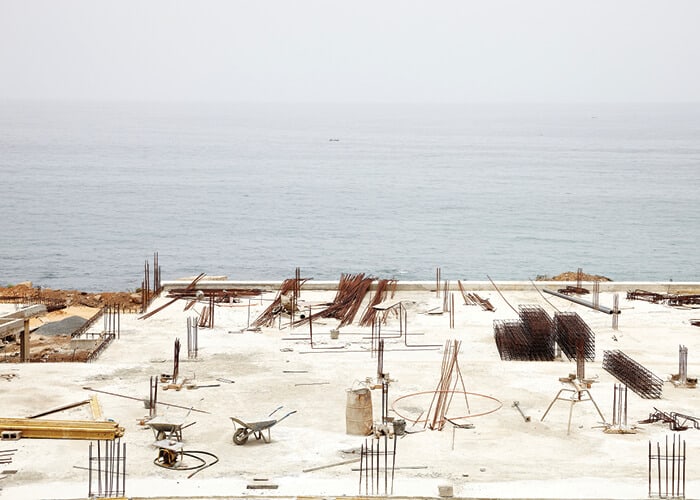 François-Xavier Gbré, detail of Baie de Mermoz #2, Dakar, Senegal, 2012. 100 x 150 cm. © François-Xavier Gbré. Courtesy of Galerie Cécile Fakhoury.
François-Xavier Gbré, detail of Baie de Mermoz #2, Dakar, Senegal, 2012. 100 x 150 cm. © François-Xavier Gbré. Courtesy of Galerie Cécile Fakhoury.
With over three hundred and fifty galleries, we pretty much have an art fair environment here in New York’s Chelsea art district and most people just wander about with little enthusiasm or curiosity as they shuffle from one gallery to the next. I also think that one of the major issues today in the West is the dwindling fortune of the middle class since the economic recession of 2008. This means that only the very rich can afford to purchase art on a regular basis and they tend to lean towards speculative acquisitions.”
Wimberly and Aghahowa’s views create a context for some of the other responses, from locals, which emphasised that while African Perspectives is a welcome development, it comes on the back of the work that is being done by all the players in the field to support the growth of the U.S. audience and market, and those who continue to do so. Through conversations with people like Neelika Jayawardane (Culture and Arts Editor at Africa is a Country and an advocate for contemporary African art in the U.S. – through a range of initiatives), it emerged that New York is a highly mediated market, where collectors rely on a professional pair of eyes to sift through the aforementioned oversaturation for them:
“Whether The Armory Show, or any other big art show, now recognises the significance of this body of work doesn’t make my work any easier or different, really. Recognition is comforting but the tasks of producing innovative work, writing about it and connecting the artists with savvy collectors – people who are in it for the long term – continues. It may be true that a new set of eyes are looking at African art now, but I think real and substantive interest is built through a far richer engagement that involves aesthetic, emotional, historical and intellectual understanding of the artists and their works.”
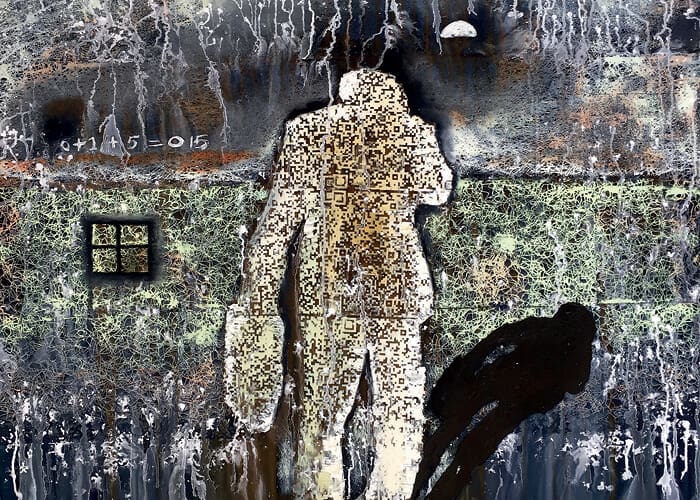 Paul Onditi, detail of Back to Back IV, 2015. Mixed media on digital polyester inkjet plate, 150 x 120 cm. Courtesy of ARTLabAfrica, Kenya.
Paul Onditi, detail of Back to Back IV, 2015. Mixed media on digital polyester inkjet plate, 150 x 120 cm. Courtesy of ARTLabAfrica, Kenya.
Addressing the issue of reception, Jayawardane and her colleague Ann Samuels – an art advisor specialising in contemporary art from Africa and the diaspora, who also runs a nonprofit called Reimagine Art, aimed at fostering public appreciation for contemporary art from Africa and the diaspora – concur that American audiences are poorly informed when it comes to African contemporary art:
“I think New Yorkers are looking to collect more contemporary art from Africa but they don’t know where to start. They’ll say, ‘I want to collect Contemporary African Art’ and I’ll say,‘from which country?’ Then they realise that it’s far more complex than they thought. Obviously there needs to be more education about art from the different African countries and hopefully the nonprofit can help with that,” says Samuels.
“They often don’t have that historical or emotional connection to these works or the artists. That is where the art professional – the knowledgeable gallerist, the arts writer, the relationship-builder – comes in. It’s important to create those relationships in order to build the foundation for a long-term market, rather than a flash-in-the-pan market,” adds Jayawardane.
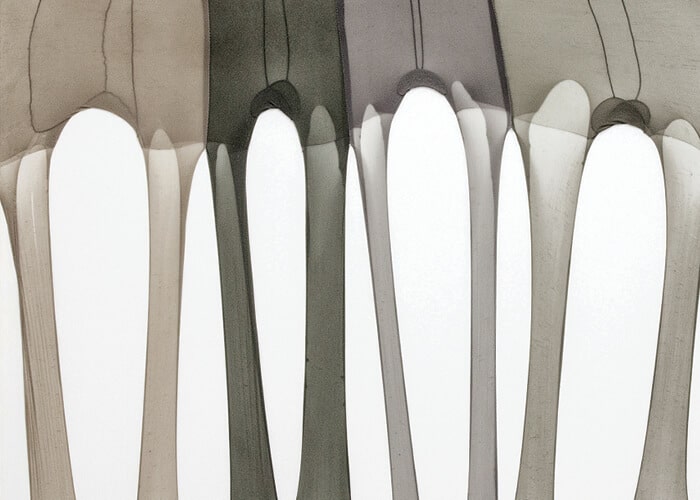 Turiya Magadlela, detail of Untitled 5, from the series ‘Inequalities’ (2016). Nylon and cotton pantyhose and sealant on canvas, 120 x 120cm. Image courtesy of the artist and Blank Projects.
Turiya Magadlela, detail of Untitled 5, from the series ‘Inequalities’ (2016). Nylon and cotton pantyhose and sealant on canvas, 120 x 120cm. Image courtesy of the artist and Blank Projects.
This view was echoed by the experiences of Danda Jarolimek, Director of Nairobi’s Circle Agency, that participated in African Perspectives, who noted:
“In general the American audience was poorly informed about African art and unaware of the current global interest in contemporary art from Africa. We had a group show in Cape Town and at Art Dubai where we were showing a Ugandan Modern artist, where the atmosphere was very different!”
Notwithstanding, Jayawardane notes that “coming to New York was the best choice; after all, New York is still the capital of the art world. However, showing in New York can be a double-edged sword. It is the place to start and if New York notices something, then Chicago, Los Angeles and Atlanta will follow too.”
The fact that African Perspectives at Armory is part of a process, with a further long-term goal, was also highlighted by Janet Goldner, a New York artist with a long-standing involvement with Africa (and Mali in particular), who noted that African Perspectives underscored the need for a paradigm shift:
“Many of the African artists who first received Western attention don’t live in Africa and many of the galleries and cultural spaces that represent them aren’t in Africa either. A paradigm shift will come when the many artists living and working in Africa have places to show (and work) in their home countries – and when institutions that are also in Africa represent them. A paradigm shift will come when there is an audience for African artwork in Africa as well as in the rest of the world.”
Importantly, all participants who responded commented on the valuable opportunity to engage with impressive audiences, institutional collectors and museum curators:
Jarolimek said, “We were blown away by the number of visitors and how many of them engaged with Ato Malinda and myself, and who took the time to look at her work, to ask questions. We were impressed by the number of museums and institutions too who visited us, the great press coverage and important new contacts we made.”
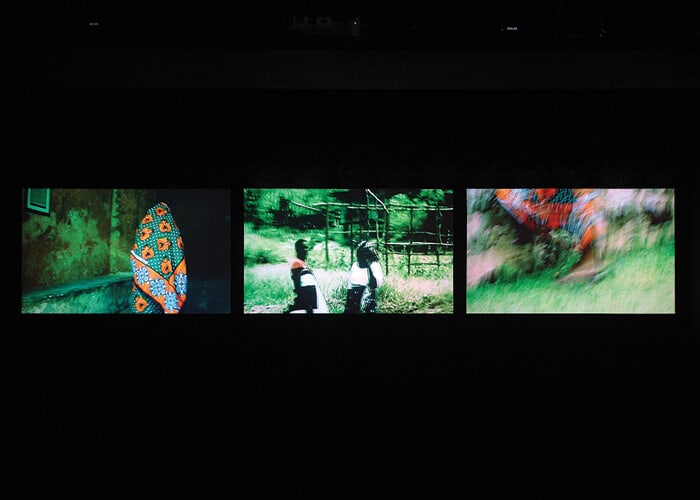 Ato Malinda, three screen video display of Prison Sex II, 2/5, 2008-9. Image courtesy of Circle Art Gallery.
Ato Malinda, three screen video display of Prison Sex II, 2/5, 2008-9. Image courtesy of Circle Art Gallery.
Lavinia Calza, Director of ARTLabAfrica in Nairobi, who took part in VOLTA NY, offered: “I was particularly excited by the fact that we were accepted to exhibit at VOLTA for the second year running. The great reception we received was validation of the work we are doing at ARTLabAfrica – in connecting emerging artists from the region and creating new dialogues with curators, collectors, museums and cultural producers throughout the world.”
She also added that compared to being situated in a niche, focused section, “It was refreshing to have the work of Peterson Kamwathi (in 2015) and Paul Onditi (in 2016) presented in an international context and have the spotlight taken off the ‘African’ label, focusing instead on the quality of the work and talent of the artists, presented alongside their international peers from all over the world.”
What does it all mean? It means that to an educated audience, the market for contemporary art from Africa is still, as Giles Peppiatt of Bonhams says, “nascent.” He continues, “Though, at this time we have seen extraordinary growth in both the actual market and also in the perception of that market. The media interest is phenomenal and I am asked to conduct interviews virtually every week on this subject.
I thought that the African focus at The Armory was a very encouraging event and it is great to see the major fairs, art seminars and gallery spotlights featuring African contemporary art. Every one of these events assists and reinforces the market. But there is no doubt that we are far from having a market with the nominal pricing levels compared to those of ‘regular’ Western contemporary art, and the constituency of collectors and buyers is still small.”
My conversations revealed that focusing on one event creates a top-heavy orientation, prioritising a small number of stars without engaging with the full depth of the undertaking – which is promoting and developing art on the continent – a task both complex and often unglamorously labour-intensive and slow to yield results.
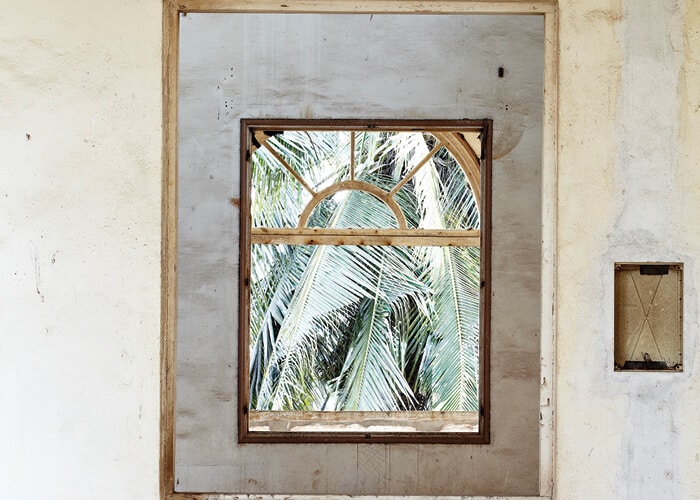 François-Xavier Gbré, detail of Palais du Gouverneur #2, Lomé, Togo, 2012. 150x100cm. © François-Xavier Gbré. Courtesy of Galerie Cécile Fakhoury.
François-Xavier Gbré, detail of Palais du Gouverneur #2, Lomé, Togo, 2012. 150x100cm. © François-Xavier Gbré. Courtesy of Galerie Cécile Fakhoury.
For now, if we search Google for “What sold at Armory?” press, we won’t see mentions of Focus: African Perspectives among press-worthy sales, due to their comparatively low prices compared to their American peers. Given the pressures of public perception, the only way we will really know how successful Armory Week was for the contemporary African artists is by seeing how many return to New York in the coming years.
To sum up, the African presence at The Armory Show belongs much more in the ‘digging the foundations’ category than ‘reaching the penthouse,’ but if we are realistic about the hard work ahead and the need for collaboration, Peppiatt’s prediction that “in another seven years the market will have evolved even further and contemporary African art will form a significant part of most collector’s portfolios and museum collections,” might just prove accurate.
Valerie Kabov is an art historian with a focus on cultural policy and cultural economics. Her research, writing and educational practice ranges from interculturality and globalisation, emerging art sectors and sustainability as well as art market analysis. She is the Co-Founder and Director of Education and International Projects at First Floor Gallery Harare, Zimbabwe’s first independent, international, contemporary emerging artist led gallery and educational space.
The Armory Show took place from 3 – 6 March 2016 on Piers 92 and 94 in New York City.



